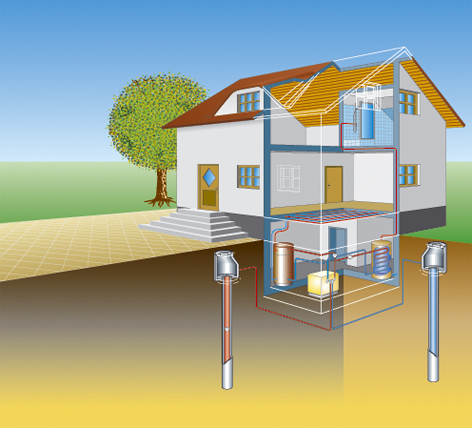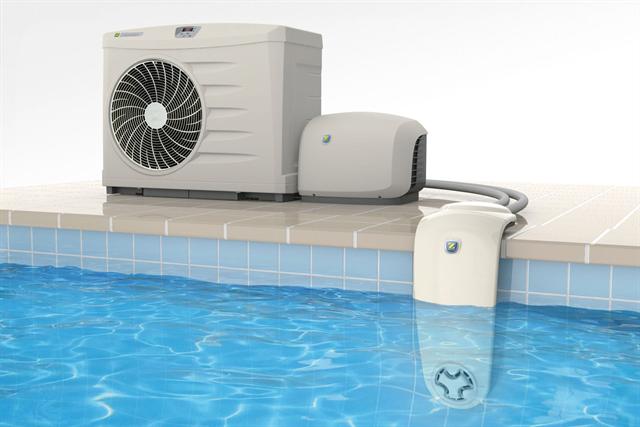
Customer service
0800 222 000 4 *
* free
E-Mail: info@BEM.com.de

Customer service
0800 222 000 4 *
* free
E-Mail: info@BEM.com.de
A heat pump extracts heat to the environment (ambient air, ground water, or soil) heat energy and raises it to a heat pump to a usable higher temperature level, in order to heat buildings or other facilities can.
Air to water heat pump
Air / water heat pumps are suitable for many new or renovated buildings. Due to their relatively low cost and favorable properties for the modernization of heating the space-saving air-water heat pumps have become well established.
function
A fan draws ambient air through the evaporator of the heat pump. This heat is removed. The pump mechanically increases the temperature and passes them to the water circuit of the heater.
ground source heat pump collector
Geothermal energy for heating 's not only in depth. Near the surface tap the heat pipes .
In brine-water heat pump with the large area collector makes up for the lack of depth in the soil again . The pipe system is 80-120 cm below the surface of the earth laid horizontally . The efficiency of such systems is much higher than that of air - water heat pumps and only slightly less than the WP with borehole .
function
For geothermal heat pumps with underground collector circulates the " Sole" . The mixture of water and antifreeze absorbs ground warmth. This passes through a heat exchanger in the heat pump , which increases the mechanical temperature again. The heat is transferred to the water circuit of the heater .
Brine / water heat pump probe
Our planet radiates heat from since its formation - ready to tap the geothermal heating.
Who is not afraid of the effort nor the cost of drilling , afterwards enjoying a heat pump with top efficiency as the sole heating for the house . Depending on the heating , air and soil are at a distance of at least 6 m usually two up to 100 m deep and 50-60 cm wide holes for geothermal probes drilled vertically into the ground.
Geothermal principle
The probes themselves are made of plastic (usually PE) tubes in which circulates the " Sole" - a mixture of water and antifreeze. This deprives the soil heat and releases it through a heat exchanger to the heat pump. The temperature inside the pump is mechanically increased again and then transfer the heat to the heating system. Boreholes bring it to a withdrawal capacity of 30 to 100 watts per meter depth and class
Water / water heat pump
Groundwater is also a storage for solar energy and is tapped.
Groundwater reserves all year round constant 7-12 ° C. This ensures a consistently high level of efficiency of the water-water heat pump. Additional heating needs it with the heat pump ground water usually does not. However, the installation of water-water pump is pretty expensive.
Two wells needed
The ground water is fed from a supply well to the heat pump. This removes the water so much heat that it cools to around 3-5 ° C. A "injection wells" it flows back into the earth. The conveyor and the injection wells will need at least 15 m apart. To ensure the efficiency of the heating, the ground water may be deeper than 15 m in both wells. In the natural direction of flow of the groundwater supply wells must be before the injection wells.

Install Swimming Pool Heating later
Use renewable energy heat pump for heating of swimming pools
Luft-/Wasser-Wärmepumpe bath water with heat.
A Luft-/Wasser-Wärmepumpe eludes the vast majority of the heat energy required to deliver the water, from the air outdoors. A fan sucks in the air and passes it through a heat exchanger which transfers the heat absorbed in the Luft-/Wasser-Wärmepumpe. Only a quarter of the required energy comes out of the socket and is necessary for the operation of the heat pump, a good three quarters are free from the air. The installation of the Luft-/Wasser-Wärmepumpen is easy to do.
Retrofitted pool heater: A Luft-/Wasser-Wärmepumpe with its own circuit.
For each pool with a solution Luft-/Wasser-Wärmepumpe.
